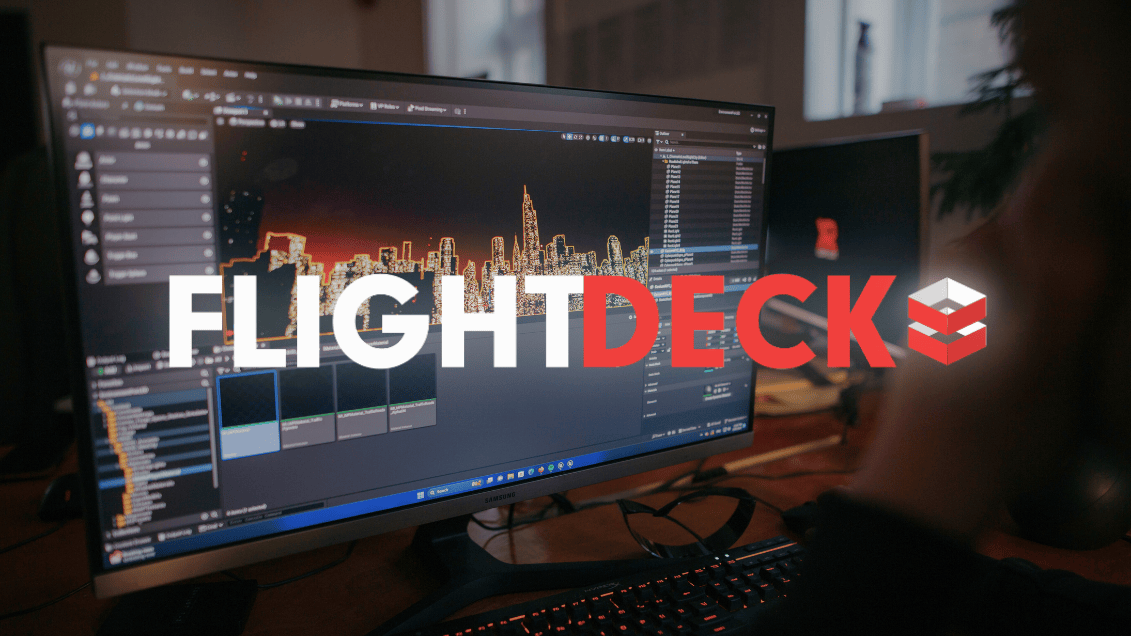
Epic Games Announces Unreal Engine 5.2: The Future of Production Graphics
But what is Unreal Engine 5.2, and why should you care? Unreal Engine is an advanced open tool for 3D creators working in real-time, arguably the most powerful of it's kind, and the latest release is a next-generation game engine that is set to revolutionize the way games, movies, and TV are designed. It's a tool that enables developers to create stunningly realistic environments and characters, all while reducing development time and costs.
Our team was quick to adopt Unreal Engine 5 into our workflows so it comes as no surprise to us that in a recent blog post Epic Games boasted a massive 77% of Unreal Engine users have already done the same. Every iteration of this tool makes leaps and bounds over what was previously possible and streamlines the processes required of us before.
The engine boasts a range of features that make it stand out from its predecessors. Features such as Nanite, Unreal Engine's new internal rendering technology enables developers to use high quality 3D assets in their scenes without sacrificing performance. This means that developers can create scenes with incredible detail, without worrying about whether their system will be able to handle it.
At the recent Game Developers Conference in San Francisco, Epic Games CEO Tim Sweeney and Unreal Engine leader Nick Penwarden took to the stage to showcase new initiatives as well as the latest features of Unreal Engine 5.2. And, from new breakthroughs in lighting and texturing to content generation and workflows, what they demonstrated was truly impressive.
Unveiling a new material framework, the substrate shading system allows artists to author materials at an unprecedented level of quality and fidelity in real time. In a riveting display of the technology, they showed off renderings of an electric car from Rivian, which highlighted the ability to instantly change the surface of a car’s digital model, adding variations to its paint job or adding dirt and mud to the surface from driving through puddles.
What was particularly impressive was that normally, artists would have to go through a programmer to make such changes happen. But with Unreal Engine 5.2, the artist can do it alone in real time, significantly reducing development time and streamlining the creative process.
But that's not all. Unreal Engine 5.2 also boasts tools to more easily make huge open worlds with procedurally generated content. The Quixel megascans tool enables the creation of scenes with things like dense vegetation more easily. In the Rivian demo, an EV truck drove through water, and the audience could see the dust and mud being washed off the truck in real time.
The new Lumen events react in real time as developers move a light source around in a scene, and the changes propagate in real time in games such as Lords of the Fallen. And as if that weren't enough, Fortnite’s Chapter 4 is already using the new technology. Lumen can bring light flooding into a room in the game’s environment, the result is a much more immersive gaming experience, with environments that look and feel more realistic.
The upgraded Metahuman Animator brings high-fidelity motion capture natively into base workflows making these animation and capture techniques easier and more accessible to users.

What truly amazed our teams though was the experimental Procedural Content Generation [PCG] tools that allowed a creative team to design a vast open environment by first creating a small hand-placed environment that can be used to define rules for procedural generation. This process allows full creative control, art direction, and customization to create near instant and scalable detailed 3D spaces.
This update of the Unreal Engine also snuck in a few updated Virtual Production tools, including shot creation and scene control tools, giving filmmakers more creative power and the ability to pull off sequences that weren't accessible before, like shooting with multiple vCams.
On top of all of that, the Verse programming language, a new web3 language developed by Epic Games, allows developers to create more complex and sophisticated gameplay mechanics than ever before. With Verse, developers can create complex, interactive environments that respond to player actions in real time, making for a truly engaging digital experience.
To help users get started with these new tools, Epic Games has also combined all of it's distinct online marketplaces into a singular one-stop shop for creating beautiful 3D worlds now accessible through fab.com.
Overall, Unreal Engine 5 is set to change the gaming industry forever. With its powerful tools and cutting-edge technology, it's never been easier or more exciting to create experiences that are truly immersive and engaging.
Of course, you can check out all of the announcements from the GDC and more at Epic Games.






.jpg)
